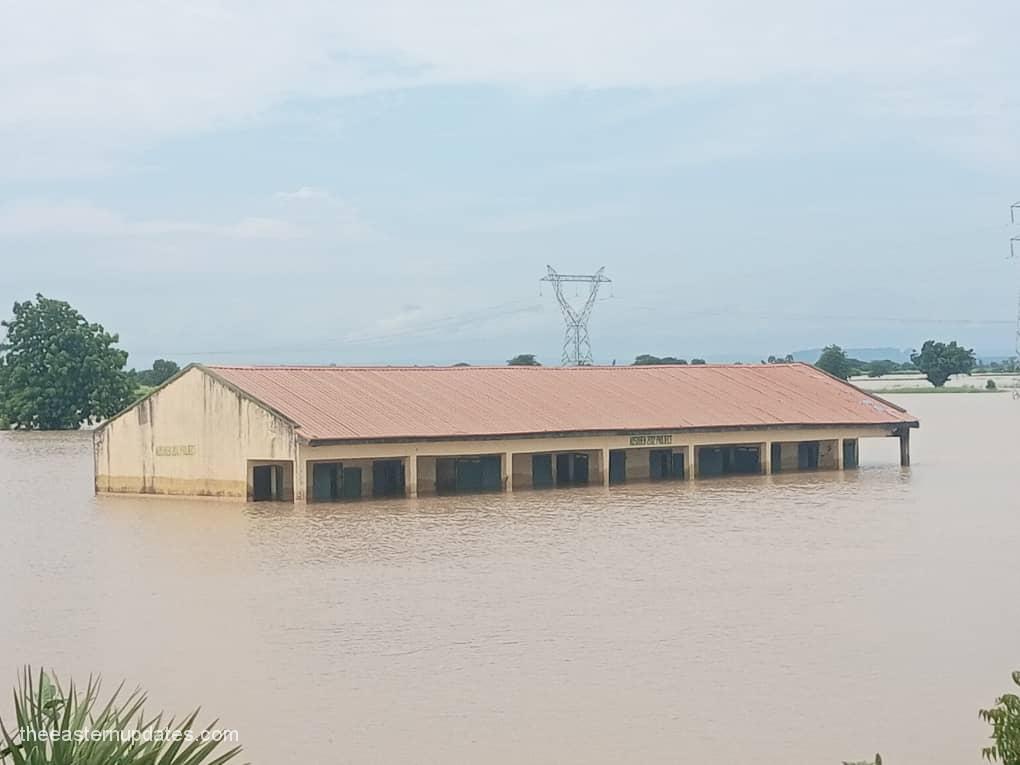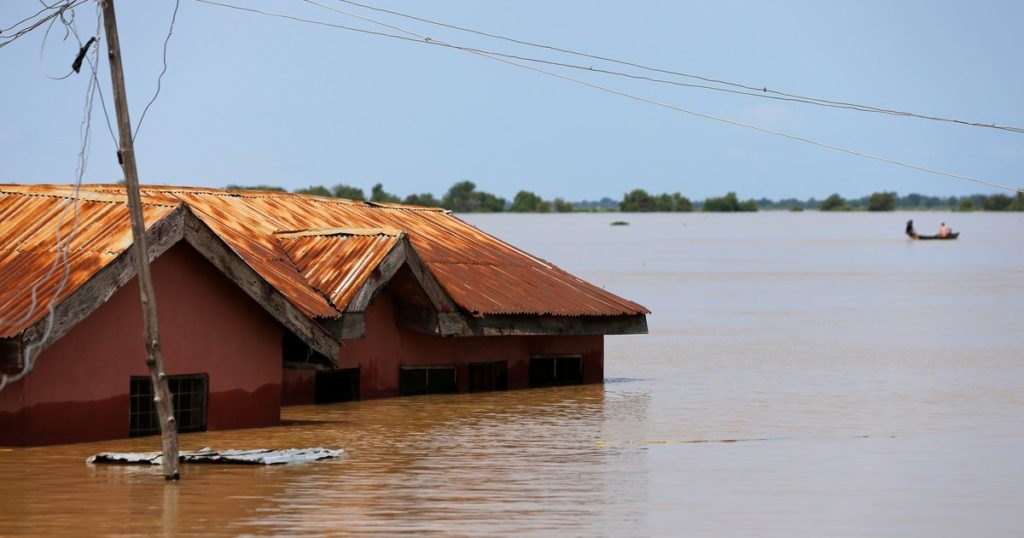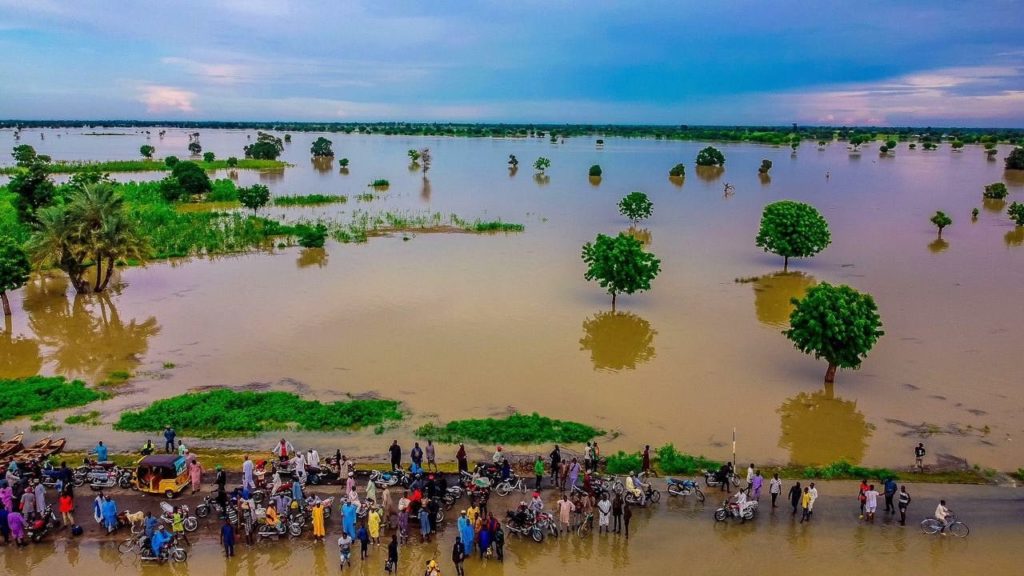It might be very easy for climate deniers to brush off climate change’s hand in the recent floodings in Africa, but let’s say we discredit this to climate change are we just supposed to wave off the floodings in Uganda, Nigeria, South Sudan, Chad, South Africa, and others as only human mismanagement?
Denying is easy when the only climate impacts you see are in your community, but from a macro perspective, it’s visible enough to connect the dots and see that our environment is taking a massive shift from what we know to unpredictability.
Anambra
In Nigeria, the floods in Anambra that affected 300 communities in six local government areas have crippled a lot of things including essential infrastructures like schools and hospitals, and people’s businesses either shut down or destroyed are changing livelihoods for many.
According to the state’s Emergency Management Agency, nearly 650,000 have been affected by the floods in the whole of Anambra most of which have now been moved to IDP camps for support.
Trying to fathom how quickly their lives have changed because of the twin powers of climate change and human mishandling that led to 76 people drowning as a result of a capsized boat is enough to plunge one into deep caves of hopelessness and other sorts of mental ills.

President Mohammadu Buhari sent his condolences to the affected families in his speech “I pray for the repose of the souls of the deceased and for everyone’s safety, as well as the well-being of the family members of the victims of this tragic accident”.
The federal government also said that the state governments should take responsibility for the damage flood had caused in their territories. This might have been said due to the federal government’s recent claim that state and local governments ignored sufficient reporting and timely warnings and weather advice issued by its various agencies, including the Nigerian Hydrological Services (NIHSA) and the Nigerian Meteorological Agency (NiMet), in an effort to prevent a flood disaster in 2022.
Kogi
In Kogi state, the flood situation left over nine local government areas heavily impacted, as reported in This Day news; 500 people were killed, magnitudes the federal government says it hasn’t seen since 2012.
Local rescue crews were observed toiling in difficult circumstances while searching amid the water and ruins to remove the bodies of their loved ones. So far, 200,000 people have been displaced as a result of the flood, which has also damaged houses, farms, businesses, and other structures.
Some drivers have been stuck for more than five days, but truckers of perishable cash crops are more concerned since they risk losing hundreds of millions of naira because their cargo is decaying.
“The flooding in Kogi state is bigger than any flood elsewhere,” said Governor Alhaji Yahaya Bello. He continued by saying that the convergence of the Niger and Benue rivers in Kogi state was the cause of the increased amount of flooding.
“I call on the federal government, I call on President Buhari, I call on World Bank and all other donor agencies to come to our rescue,” Bello said as he pleaded for federal and international assistance to tackle the floods and give relief.

So what really is the problem?
Climate change
Climate change is facilitated by the increased warming of the atmosphere which causes anomalies of various sorts. A warmer atmosphere can store more moisture, and if there is more moisture present, more rain may fall in brief, strong bursts. The likelihood of flash floods may rise as a result because the increased heat in the atmosphere provides more energy for weather systems that produce heavy rain.
These rainfalls, coupled with the shortcomings of governments to reduce the severity, would create scenes like Kogi and Anambra that will affect economies and livelihoods and ultimately take lives.
Now more than ever, the inclusion of climate-resilient plans should be at the forefront of government plans, especially in the unpredictable times we are all in. It’s not enough to give warnings, Nigeria should start becoming resilient to these forces, starting from those most vulnerable.
Land planning
Irrespective of Nigeria’s past dance with flooding, Nigeria’s current urban and regional land planning does not adequately take into account its disaster realities. And the public is not really in the know of land planning processes and rudiments to avoid flood plains, but away from the people’s ignorance.
The failure of government at all levels to execute and enforce effective pertinent land planning legislation further deepens the problem. Now, wetlands and floodplains are sights for residential construction.
Provision for awareness
The Nigerian Meteorological Agency (NiMet) is mandated by law to provide weather predictions and set up rain gauges to measure the quantity of rainfall in a region.
However, there might be obscurity as to whether the agency is hampered by a lack of rain gauges that make it difficult to predict rain accurately. And many times, warnings are either not sent out to the general public on time or even at all, hence increasing the flood risks.
Conclusion
Whether or not you choose to deny climate change because of the herculean task not managed by the government, the indiscriminate force of climate change has already been set rolling too long ago.
Now it’s manifesting itself in several ways and is multiplied by our failures. We need to drop this climate change apathy inbred in us and take up a response that is resilient and timely because climate change affects everything.
Author: Hope Lekwa
Image Source: https://dailypost.ng/wp-content/uploads/2022/10/Jigawa-flood.jpg.webp, https://leadership.ng/wp-content/uploads/2022/06/Nigeria-Flooding.jpg

